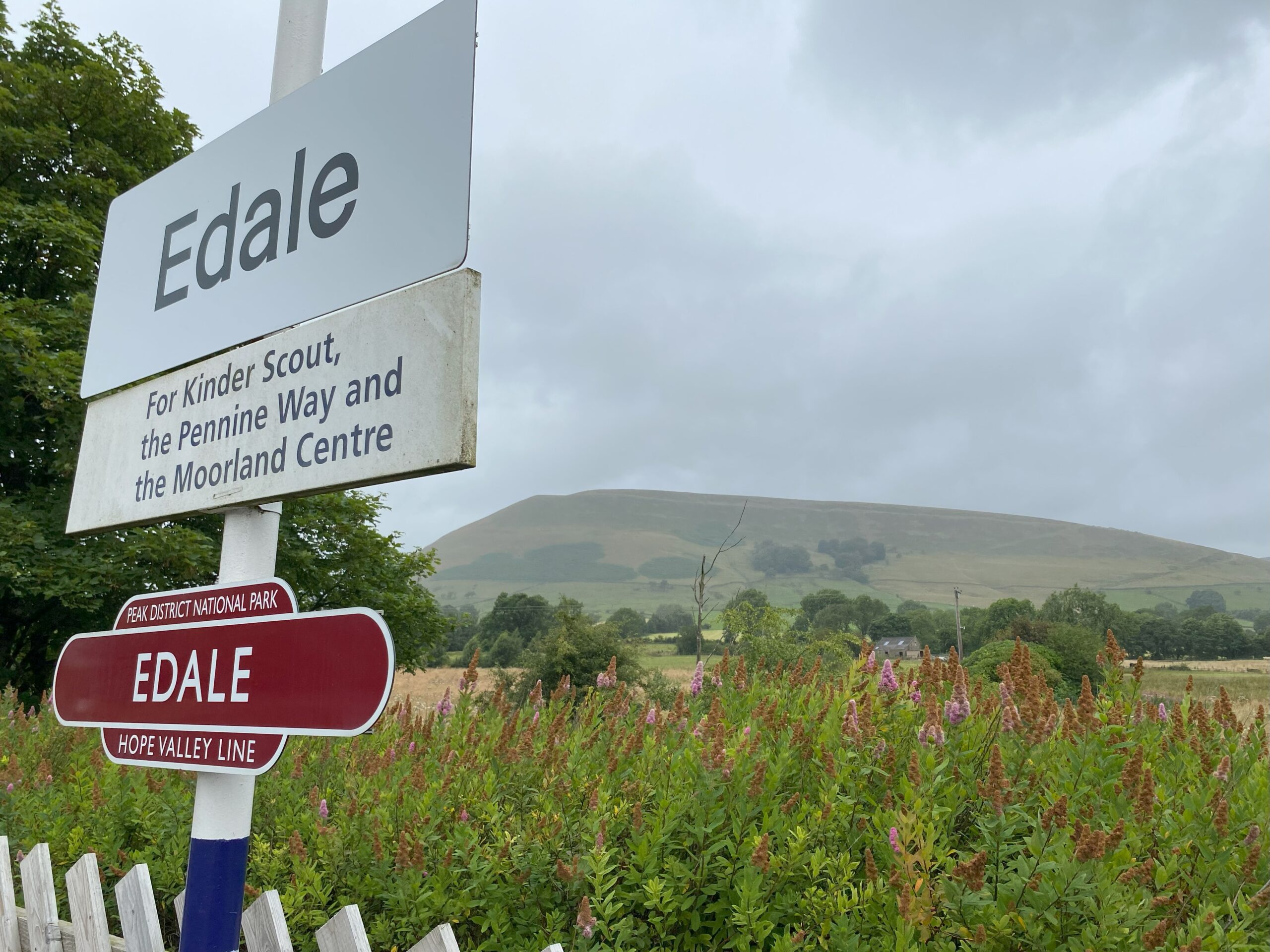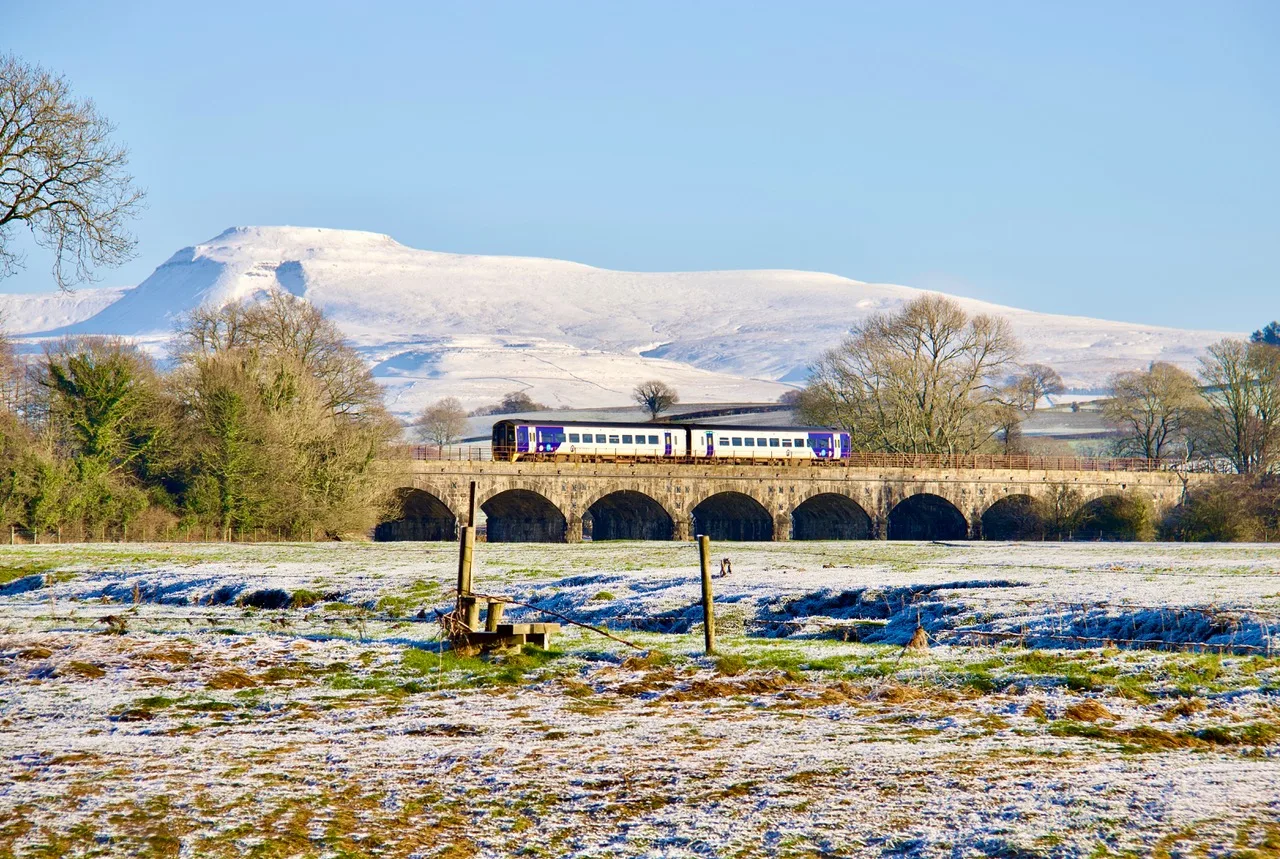Guest blog: A local’s guide to The Buxton Line
Join David Carlisle, a proud member of the Friends of Buxton Station, as he shares a local’s guide to the beautiful Buxton Line.
Leaving the bright lights of Manchester and the bustling town of Stockport behind, the Buxton Line continues from Hazel Grove to the celebrated market town of Buxton, passing some of the most stunning vistas anywhere in the north of England.
Let me give you a local’s insight into this beautiful railway line, a journey that’s sure to get your travel tastebuds tingling…
As the train revs up to depart Hazel Grove Station, there’s a feeling that you are leaving the metropolis of Manchester and its surrounding suburbs far behind.
Stretched out like some tapestry of trees, the landscape opens out and offers tempting glimpses of distant verdant hills, teasing flashes of inviting countryside.
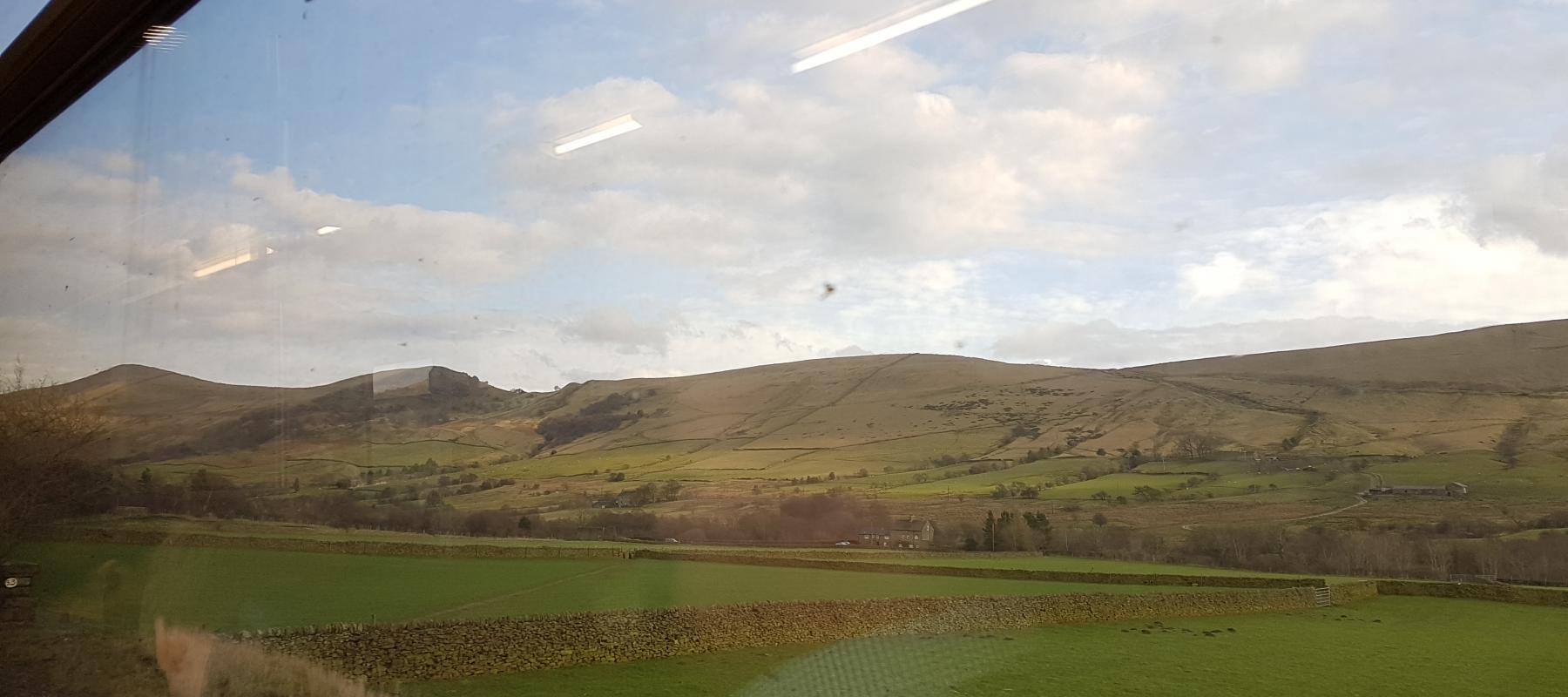
View from the train along the Buxton Line. Photo by David Carlisle.
Not every service stops at Middlewood, but it is worth the visit. Feeling more remote than reality, the station sits above a snaking river valley, cheek-by-jowl with The Middlewood Way, a traffic-free cycleway, bridle path and long-distance walking route.
Back on the train, passing through sparse woodland before ramping up to Disley, the delightful view into National Trust Lyme Park doesn’t disappoint. Disley station is the start of The Gritstone Trail, a 35 mile (56km) footpath leading to Kidsgrove Station, picking out some of the finest vantage viewpoints of the Cheshire Plain.
A destination in its own right, Disley provides fine dining opportunities and access to the canal towpath, occasionally running close to the railway line all the way to Whaley Bridge and beyond.
Next up, is New Mills. In the “it does what it says on the tin” tradition, this place sprung up on two raging rivers, which fed cheap power to nine cotton mills, three weaving mills and a corn-mill as well as a number of other early factories.
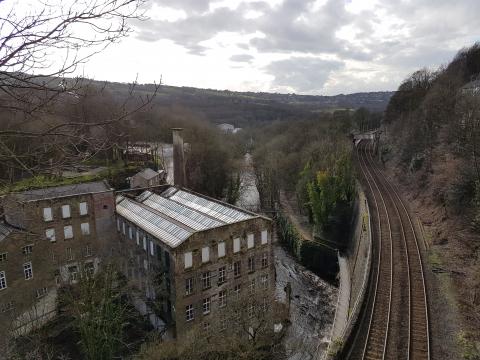
A view overlooking mills and the railway near New Mills. Photo by David Carlisle.
Nowadays, the deep gorge riverscape has been tamed by the spectacular wire-hung and stilted Millennium Walkway – a breathtaking amble across a sheer cliff face just a few feet above the stirring waters right next to the New Mills Central Station, just a short distance from New Mills Newtown.
Leaving New Mills, the track parallels the roadway and canal, but looking out further left, the glorious River Goyt dominates the spectacular setting of the Goyt Way and Midshires Way. Huge railway arches, serving the Hope Valley Railway (Manchester to Sheffield route) span the river and frame distant hills.
Arriving at Furness Vale provokes the feel of a charming 1950s station because of the old fashioned cast iron bridge, road crossing and imposing track-side signal box.
Right on the canal, is a dropping-off point for the Midshires Way, a 225 mile long distance footpath across the Shires of middle England.
The journey south unveils rolling hills and round-topped mountains, the railway sits in a valley at this point, but views start to open up approaching Whaley Bridge. The canal basin next to the station offers pleasure trips and easy walking, back as far as Disley and Marple.
Not far from Whaley Bridge is the Bugsworth Basin (sometimes referred to as Buxworth). Visit the Bugsworth Basin Heritage Trust Centre to hear about the area’s fascinating history or walk along the Peak Forest Tramway Trail.
Returning to Whaley Bridge, the Goyt Valley can be easily reached from the town centre, following a route along the top of the Toddbrook Dam, which famously almost collapsed in 2019.
The stretch of railway between Whaley Bridge and Chapel-en-le-Frith is among the most beautiful in England.
Opening out straight after leaving Whaley Bridge station, the relaxing train ride provides the best possible way to enjoy incredible scenery, as stunning as it is changeable, verdant and alive.
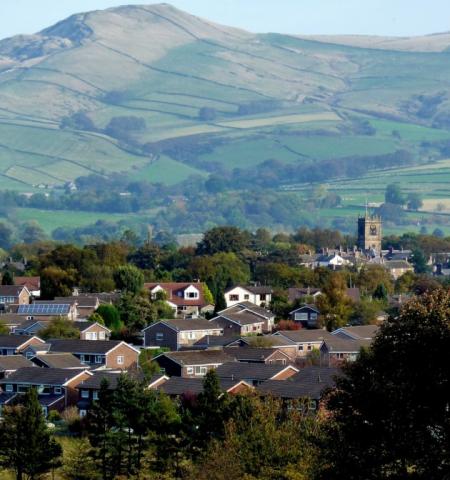
A view from Chapel Station along the Buxton Line. Photo by David Carlisle.
Chapel-en-le-Frith Station (or Chapel Station for short) on the long curve around Combs Reservoir, affords a truly delightful vista, book-ended by Eccles Pike and South Head – curvaceous mountains like those a child would draw!
The walk into the town centre from Chapel Station takes about 20 minutes but is rewarded by cobbled homely streets and a corresponding slow pace of life.
Continuing our journey on the train, chugging up the incline towards Buxton, the route passes through two tunnels, steeply sided ravines before reaching the Peak District village of Dove Holes.
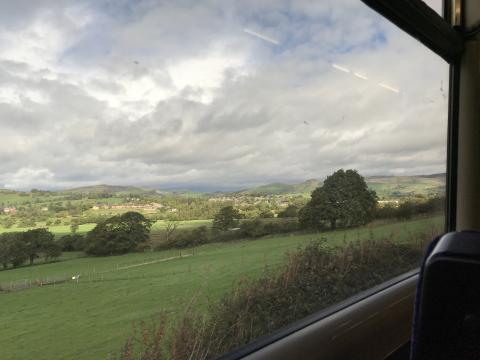
View from the train along the Buxton Line. Photo by David Carlisle.
Dove Holes was once a stopping point for an off-road packhorse route along the Combs Valley back towards Whaley Bridge, a journey on foot you can take today.
Reaching Buxton Station has an end-of-the-line feel about it. The iconic fanlight window stands astride the tracks and delightfully terminates the journey.
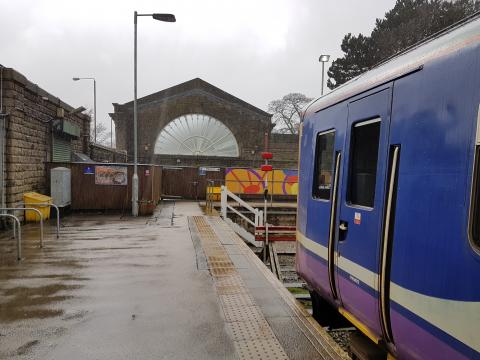
A rainy day at Buxton Station. Photo by David Carlisle.
A short stride from the station and Buxton offers a treasure trove of culture, architectural heritage and enthralling entertainments. Best discovered in the festival season running through the summer months, the town gives up hidden gems and welcoming secrets to the intrepid traveller – why not explore it for yourself?
Find great ideas for days out by train along the Buxton Line.
About the author
David Carlisle is a member of The Friends of Buxton Station. The Friends group are involved in a huge range of community development and environmental projects in and around their railway station supported by High Peak & Hope Valley Community Rail Partnership.
Find out more about the incredible work of the Friends of Buxton here.

